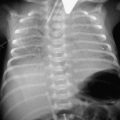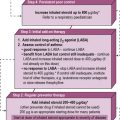5 Safeguarding children
Physical harm
What might make you suspect a child has suffered a non-accidental injury?
1 Factors in the history
• No explanation is given as to how a significant injury might have occurred.
• There are inconsistent or differing stories given about the cause of injury
• The explanation given is inappropriate for the child’s expected developmental level. (‘Those who don’t cruise, don’t bruise’ – immobile children are not likely to accidentally sustain multiple bruises on their legs; by contrast, the shins of most 4-year-olds are covered in bruises.)
• The explanation given is incompatible with the injury sustained, e.g. an 18-month-old child has bilateral fractured femurs, where his mother says the injury happened when he did a ‘roly-poly’ on the kitchen floor.
• There is delay in presentation. The normal reaction when a child is injured is to seek medical advice at once. If a child is presented many hours or days later non-accidental injury is more likely.
What should you do if you have child protection concerns?
1 Accurate documentation is essential
Ideally you should always document:
• When the history was taken – give date and time accurately
• Who gave you the information and who else was present (other relatives, nursing staff, etc.)
• What precisely you are told. Use quotations directly – it can prove very helpful when someone else reviews the history, and will be more accurate than your interpretation of what you have been told. For example, it is better to say ‘Mum told me that “David fell down the stairs and hit his head”’ than just ‘David fell down stairs and hit his head’. After all, did you see it happen yourself?
What should happen once someone has raised the possibility of abuse?
• A social worker will carry out an initial assessment of the family situation and the risks to the child/children
• A strategy meeting will be held to decide what further action should be taken. This generally involves key professionals involved in the case
• An initial case conference will be convened at which a decision is made as to whether or not a safeguarding plan should be instituted. This will ensure professional carers and the local authority work together in a planned way to ensure the child’s continuing safety
• The progress of the safeguarding plan is reviewed at a review case conference about 3 months later. Once conference agrees that the child’s safety is assured the plan can be discontinued.
Other types of abuse
Information sharing and confidentiality
Working together to safeguard children. UK: Ministry of Education; 2010.
Child protection companion. Royal College of Paediatrics and Child Health; 2006.
Welsh Child Protection Systematic Review Group. www.core-info.cardiff.ac.uk/
Protecting children and young people: responsibilities of all doctors. http://www.gmc-uk.org/guidance/ethical_guidance/13257.asp






